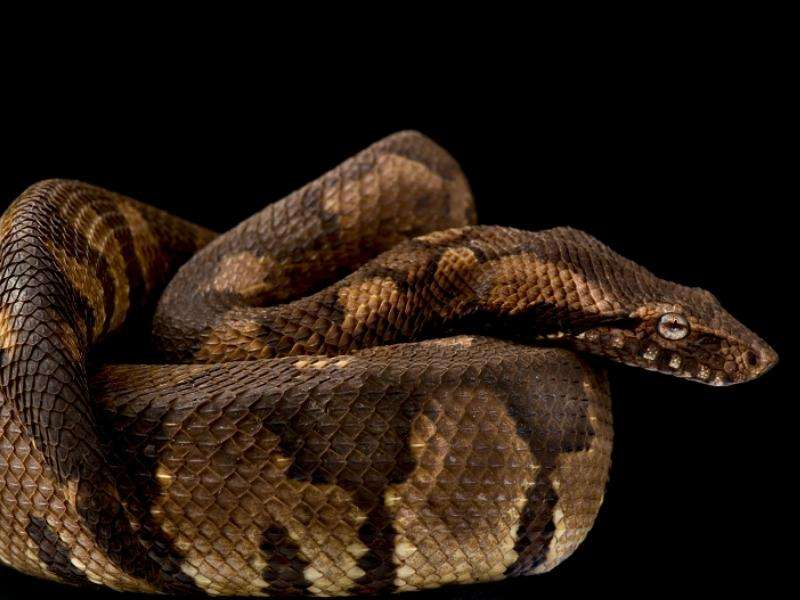
Description:
Scientific name: Candoia aspera
Life span: 10-20 years
The name of this little snake, which resembles a viper, is the viper boa. The snake has a triangular-shaped head, a stocky body, rough-keeled scales, and a blunt nose. The snake’s color is typically dark, and its body is covered with unique spots. The viper boa is more difficult to spot in the wild thanks to these hues. Often, the snake’s belly is a pale cream or tan color. Males and females can easily be distinguished because males are smaller and have long, angular spurs.

Native Region/Habitat
It can be located in New Guinea (in the Papua province of Indonesia and in Papua New Guinea). It is a terrestrial species that resides in vegetation.
Behavior:
Nighttime snakes are called viper boas. This indicates that the night is when they are most active. As a result, they frequently tunnel under their substrate, hiding places, or leaf litter throughout the day. They take this action to avoid the sun. These snakes constrict its prey, just like other boas do. They are great hunters, but because they have a slower metabolism than other snakes, they don’t need to hunt as frequently. These snakes thrive in humid environments and are frequently observed spending a long time bathing in their water bowls. They have been observed swimming in marshes in the wild. Viper boas that have been trapped in the wild are hostile, easily stressed, and uneasy around people. Captive-bred viper boas are usually calm and even-tempered. These snakes can be handled briefly and rarely bite if properly socialized from a young age.
Care As a pet/In captivity:
Conditions for good care and imprisonment
- The typical temperature ranges from 78.8 to 82.4 degrees Fahrenheit. In general, the humidity ranges from 73% to 80%.
- The viper boa requires a temperature gradient, much like other snakes do. To maintain the health of your snake, aim for the following temperatures: 88°F on the hot side, 80°F on the cool side, 80°F overall, and 75°F at night.
- A terrarium that is at least 3 feet by 2 feet by 1.5 feet in size is needed for adult viper boas. These snakes require far more floor area than vertical space because they are terrestrial and hardly ever climb. The terrarium should still have enough height to support a deep substrate, though.
- In the wild, viper boas are carnivores that consume a variety of foods, such as small mammals, reptiles, amphibians, and fish. These snakes should be fed fully thawed rodents in captivity, with feeder fish and lizards periodically provided as a treat.
Table





